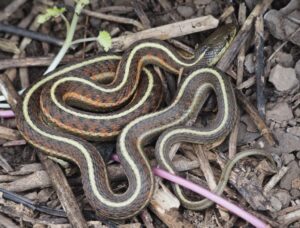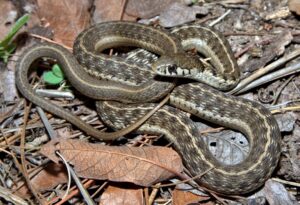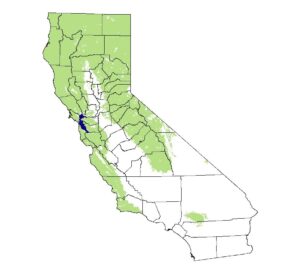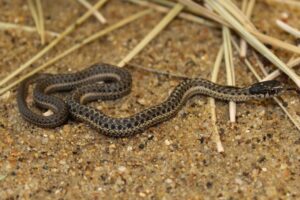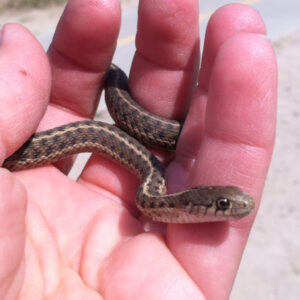Western Terrestrial Garter Snake (Thamnophis elegans)
Updated on
25/04/2024The terrestrial garter snake is a solitary, diurnal, North American colubrid snake. As its name suggests, it is mostly terrestrial though populations in the Rocky Mountains and Great Basin are semi-aquatic. As its physical characteristics are extremely variable, even experienced herpetologists find it difficult to identify the snake.
Scientific Classifications
- Suborder:Serpentes
- Family:Colubridae
- Genus:Thamnophis
- Species:T. elegans
Conservation Status
Subspecies
Six subspecies of the snake have been identified though their validity is debated.
- Arizona garter snake (Thamnophis elegans arizonae)
- Mountain garter snake (Thamnophis elegans elegans)
- San Pedro Mártir garter snake (Thamnophis elegans hueyi)
- Coastal garter snake (Thamnophis elegans terrestris)
- Wandering garter snake (Thamnophis elegans vagrans)
- Upper Basin garter snake (Thamnophis elegans vascotanneri)
Description
Size
The snakes are medium-sized, at 18-41 in (46-104 cm).
Color and Appearance
Most individuals have a white, light orange, or yellow dorsal stripe with two more of the same color, one on each side. Some have black or red spots between the dorsal and side stripes.
Are They Dangerous to Humans
The snake has mildly venomous saliva that can cause mild human envenomation with occasional local edema and other minor symptoms. So it poses no threat to humans and can only be used to paralyze its small prey. Plus, the species only bites when it is extremely threatened.
Western Terrestrial Garter Snakes at a Glance
Distribution
It lives in central Alberta, central British Columbia, and southwestern Manitoba in Canada. Its range also includes the western United States, as far east as the Oklahoma Panhandle, and western Nebraska. Baja California in Mexico has an isolated population.
Habitat
The colubrid occurs in woodlands, grasslands, and coniferous forests from sea level to 12,999 ft (3962 m).
Lifespan
The western terrestrial garter snake lives for 4 to 5 years.
Predators
Northern harriers, osprey, sandhill cranes, red-tailed hawks, ring-billed gulls, bald eagles, American robins, great blue herons, Brewer’s blackbirds, common crows, raccoons, Virginia opossums, American mink are its predators.
Diet
The polyphagous snake’s diet depends heavily on the food available in the environment. Therefore it varies greatly with geography leading it to be classified into two different variants, coastal and inland. The coastal population lives near the US’s western coast, eating terrestrial prey like salamanders, slugs, lizards, and small mammals. Inland populations have a semi-aquatic diet of tadpoles, fish, and leeches.
It is the only garter snake species that has a tendency to constrict its prey. But the constriction is inefficient due to the lack of organization, and looseness and instability of the coils, resulting in a longer time to kill prey. The inland populations are more adept at constriction than the coastal ones.
Reproduction
Ovoviviparous (gives birth to live young from eggs that hatch inside the body)
Mating occurs in spring after the snakes emerge from brumation. Broods of 8-12 young are born in August and September.
Source
inaturalist.ca, csvcoll.org, naturemappingfoundation.org, sdherps.org, projectnoah.org

